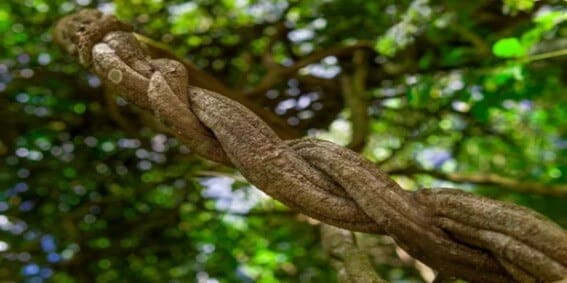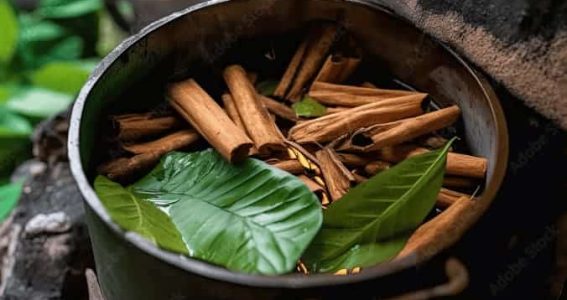Ayahuasca is a sacred drink used in the traditional medicine of the indigenous peoples of Peru. It is made from plants such as Banisteriopsis caapi and Psychotria viridis. Its consumption can produce therapeutic and transformative effects. However, it is important to consider the associated risks and contraindications. The ancestral ceremonies and rituals of ayahuasca continue to be practiced in various communities in Peru.

Ayahuasca has its roots in the history of Amazonian traditional medicine, where plants were considered guardians of health and spirituality. Over the centuries, indigenous communities have used this powerful drink in sacred ceremonies to heal the body and soul.
History of Amazonian Traditional Medicine
Ancestral Uses in Indigenous Peoples
Ayahuasca, an ancestral drink used in sacred ceremonies, is composed of specific plants that give it its unique properties. Below are the key plants present in the preparation of ayahuasca:
Plants Used in the Preparation of Ayahuasca
Alkaloids Present in the Sacred Drink
The combination of Banisteriopsis caapi and Psychotria viridis in the preparation of ayahuasca results in a complex synergy of alkaloids with therapeutic and psychoactive properties. Among the most notable alkaloids are harmine, tetrahydroharmine, and DMT, which work together to produce the characteristic effects of ayahuasca.

Ayahuasca has a profound impact on the mental health of those who consume it, opening doors to unique psychological and spiritual experiences.
Psychological and Spiritual Impact
The consumption of ayahuasca can induce intense psychedelic experiences that may lead to deep reflection on oneself and one’s place in the cosmos. Many people report visions and spiritual revelations during the ayahuasca experience, which can have a transformative impact on their daily lives.
Therapeutic and Transformative Benefits
People Not Recommended for Consumption
Dangers Associated with Uncontrolled Environments
The consumption of ayahuasca in uncontrolled environments can pose multiple risks to the health and safety of those involved. The associated dangers include:
Conclusion
It is essential to consider the potential risks and contraindications associated with the consumption of ayahuasca, as well as the importance of engaging in this practice in safe environments under the supervision of specialized shamans or guides. The safety and well-being of participants must be a priority in any ceremony or ritual involving the use of this sacred plant.
Ayahuasca is a sacred plant that has been used in traditional ceremonies and rituals by various indigenous cultures in Peru for centuries. These ancestral practices have been fundamental in Amazonian traditional medicine and in the transmission of sacred knowledge and traditions from generation to generation.
Ceremonies and Practices in Traditional Medicine
Transmission of Ancestral Knowledge and Traditions
The rise of tourism linked to ayahuasca experiences has seen significant growth in recent years in various regions of Peru, attracting travelers seeking spiritual and therapeutic experiences.
Boom in Ayahuasca Experience Tourism
Impact on Local Culture and Economy
Importance of Trained Shamans and Safe Locations
To ensure a safe and enriching experience with ayahuasca, it is essential to have experienced shamans who respect traditions. These spiritual guides possess the necessary knowledge to conduct the ceremony properly and accompany participants on their inner journey.
Precautions and Care Before and After a Ceremony
Ayahuasca has garnered significant interest in the scientific community and among therapists for its potential therapeutic and transformative properties. Various research studies have focused on exploring the effects of this master plant on mental health and overall well-being.
Researchers’ and Therapists’ Interest in Its Properties
Analysis of Psychotherapeutic Studies
Some studies have shown that ayahuasca can facilitate deep therapeutic processes, allowing individuals to explore their emotions, traumas, and thought patterns more clearly and profoundly.
Advances in Understanding the Effects and Therapeutic Uses
Impact on the Psyche and Spirituality
Studies have revealed that ayahuasca can generate profound experiences of introspection and spiritual connection, which has piqued the interest of therapists and psychologists in its potential for personal growth and emotional healing.
Ayahuasca has experienced a notable increase in its use for treating mental disorders and addictions, being considered an effective therapeutic tool in contemporary society.

Use in the Treatment of Mental Disorders and Addictions
Future Perspectives in the Therapeutic and Spiritual Realm
Ayahuasca has transcended borders and become an internationally recognized sacred drink, sparking interest and curiosity in various cultures around the world.
Dissemination and International Recognition of the Sacred Drink
Respect for the Traditions and Knowledge of Indigenous Cultures